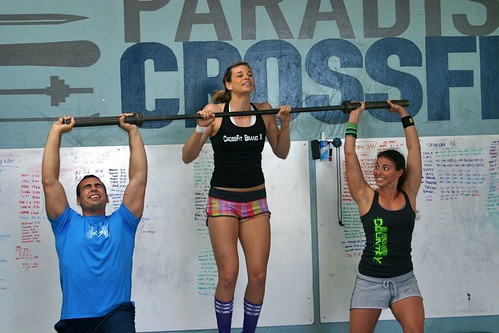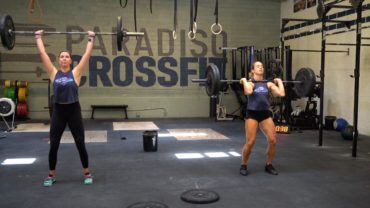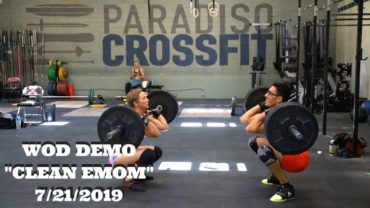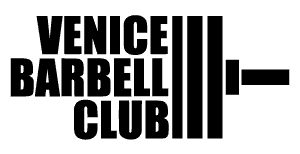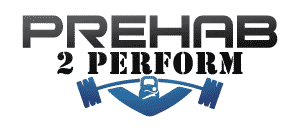Answers
In 5 minutes:
Find 1 rep max Squat Clean
Rest 2 minutes, then for time:
50 Power Cleans (135/95)
50 Wall Balls (20/14)
50 Kettlebell Swings (55/35)
You may substitute one of these three exercises for something you want to work on…preferably not something you are good at!
Why thank you Zeb! It looks like the first post got your attention and got you all fired up! Lets start here:
1) The only Challenge requirements are: sign up, pay $10, take a before and after picture of yourself (this is for your own personal use and does not need to be shared with anybody) and perform a before/after WOD.
2) The challenge is called the IWC for Increased Work Capacity. Nerdy, I know, but the point is that this is a nutrition challenge wrapped in a workout competition. To win the competition, you will need to do more work faster and nutrition is the best way to get there!
3) The workout and prizes will be released next week. Following suit with the title of the challenge, the WOD will not be so technically challenging, as much as, straight up work capacity with a moderate to high discomfort level:)
4) The Challenge itself is 8 weeks long. I know there was some confusion on this point, but the actual contest begins the week starting Monday, March 14th and ends the week of Monday, May 2nd.
Where does the Nutrition Challenge fit into all of this…
People write entire books on what to eat and why.
I could tell you exactly what the best way to eat is, but I would be guessing, because I’m not you! Nutrition is deeply personal and only you can determine what works best. The only person you are accountable to is yourself. Much like we use the clock and the competition within a small group environment to ellicit higher levels of intensity, this challenge is meant to motivate you to explore the effects nutrition plays in your performance and everyday life. So the nutrition challenge has become to change the way you look and interact with food. We challenge you to educate yourself about what you are eating and to discover the connection, that beautiful connection, with how you feel and perform. We will provide you with resources and support along the way, but you will have to do the hard work!
In order to further prepare you for the beginning of the challenge, I will put a few links and ideas below. Also, in lieu of the CrossFit 201 lecture, we will have a brief discussion at the Potluck this Sunday.
Paleo First Timers
The recommendation is to be completely strict for the first 30 days, after which you can begin to experiment with reintroduction of certain foods (in moderation of course). If you have never done this, it is highly recommended! The previous post I wrote, which included a major excerpt from the Whole9 blog, is a great place to start. (This is where you will find the DO NOT eat list and other rules for a strict 30 day program, if you have any particular concerns, please post to comments or contact me directly for more information).
Another easy reference is Robb Wolf’s Quick Start Guide from his book the Paleo Solution. Here are his keypoints for eating Paleo:
• Beverages are coffee, tea, minearal water. Unsweetened, this includes stevia.
I have been eating this way for about two years now, and the discussion of my food choices is always a hot topic amongst friends and family. I have found the easiest way is to explain what I am eating, instead of what I am not eating. In Paleo,the majority of your meals look something like this:
• Finally, round out the meal with good fats from avocado, coconut, olive oil or a handful of un-salted nuts such as almonds, pecans, macadamias or walnuts.
Enter the Zone
The above is great, but as was previously suggested in yesterday’s post and experienced in previous challenges, understanding how to balance your meals is the second half of the equation. Remember, this is about optimizing perfomance! The CrossFit Journal Article 21 is the best place to go for this information. Learning why you can eat 10 cups of lettuce, but only a third of a sweet potato is good information to know. Not all veggies are created equal! That being said, if you don’t won’t to go completely strict on the Paleo side of things (can’t give up your cheese for instance), you can know how to portion out the ‘unfavorable’ items in your diet. The recommendation for adapting to the Zone diet protocols is to stay strict, weighing and measuring your food for one to two weeks depending upon the individual.
The following is an abstract of the article:
Understanding how the Zone works begins with understanding “blocks.” A block is a simplified unit for measuring the 3 macronutrients in your food (protein, carbohydrate and fat). One block is comprised of: 7 grams for protein, 9 grams for carbohydrates, and 1.5 grams for fats. Equal representation of all the macronutrients constitutes a meal. Mastery of this concept makes meal building a snap. The “Block Chart,” outlines daily block requirements, which differ from person to person, as well as the macronutrient content of common foods…CrossFit has been experimenting with portioning strategies for over a decade. We encourage everyone to weigh and measure for one week. It may not be fun, but the benefit will be invaluable. Within a week you will have developed the ability to estimate correct food portions and formed a heightened sense of your nutritional needs.





